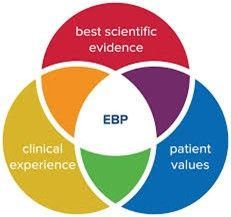3 High-Risk Factors for Teen Suicide Prevention
Teen suicide prevention is a major emphasis for behavioral health agencies. Before COVID, the pressures on youths were already high due to social media and cyberbullying drug and alcohol use, and violence. Many factors play a role in teen suicide.
But mixed in with these issues are three very high-risk groups. Where the likelihood of attempted or successful suicides jumps through the roof. And because behavioral health agencies treat these youth consistently, there needs to be more awareness, identification, and treatment. These youth tend to be more out of the mainstream. Left behind. And ones where the personal support systems don’t exist as much as they do for other youths. To advance teen suicide prevention, these three areas must be addressed when a practitioner meets with a client.
They are:
Childhood abuse or trauma. Youths with a history of abuse or trauma in their early years suffer more emotional and physical problems than other youths. The Adverse Childhood Experiences (ACEs) research indicates youths with these types of history have more difficulties. The experience of trauma, especially sexual victimization, affects a youth over the years. There is a sense of powerlessness. Hopelessness. The disbelief they have control over their life and environment. Along with this comes a sense of shame. They don’t feel bad. They feel that they are bad.
Studies also show a change in brain chemistry. Because of sexual abuse or other types of trauma, the youth’s ability to manage stress is compromised. Changes occur in the brain’s metabolism of serotonin, which can lead to higher levels of depression. They are in “survival mode”; always on guard. Hypervigilant.
Youths with a history of childhood abuse or trauma are twice as likely are other youths to attempt or complete suicide.
Youth in foster care. The nature of youth being in foster care starts them on the path toward emotional difficulties. Being taken from their home is the first factor. With witnessed abuse or neglect, the risk increases. And then if the youth themselves is the victim of that abuse or neglect, there are more risk factors for emotional problems. Then being placed in someone else’s home.
The uncertainty, the adaption to a new home, all lead to higher risks of depression, anxiety, or substance use. When youths are in foster care, they feel a lack of control over their lives, which leads to more depression and suicidal thoughts. These types of problems complicate their treatment. Especially if they already enter the system with behavioral or emotional problems. Take into account many of them are also survivors of childhood abuse or trauma, and that leads to more difficulties.
Youths in the foster care system are almost four times more likely to have attempted suicide than other youth.
LGBTQ youth. These youths have different experiences in their sexual orientation, gender identity, and expression. And are on the continuum from denying who they are to fully accepting it. And even along with that range, there are no guarantees how others, including family, accept them and their feelings. Consequently, they feel loneliness, depression, and a sense of hopelessness. That no one understands them. That others mock them for being themselves. It creates the fear to be themselves. Combating stigma, prejudice, and discrimination.
The rate of suicide attempts by LGBTQ youth is five times higher than that of other youths.
What do these youths have in common? The sense of loneliness. Lack of family support or the opposite, family estrangement. Feeling as outsiders. Unloved. Unneeded. Isolated and alienated. The same types of traits are seen in the population of youth who attempts suicide.
What can be done about teen suicide prevention? Develop means of inclusion. Support. Encouragement. Develop coping skills to help these youths. And an outlet so that when they feel down and moving towards suicidal thoughts, they feel or believe there’s hope. Something to live for.
PRAXES offers training for behavioral health agencies and their staff, including Suicide Prevention.
For more information on training for your agency, please contact us.




